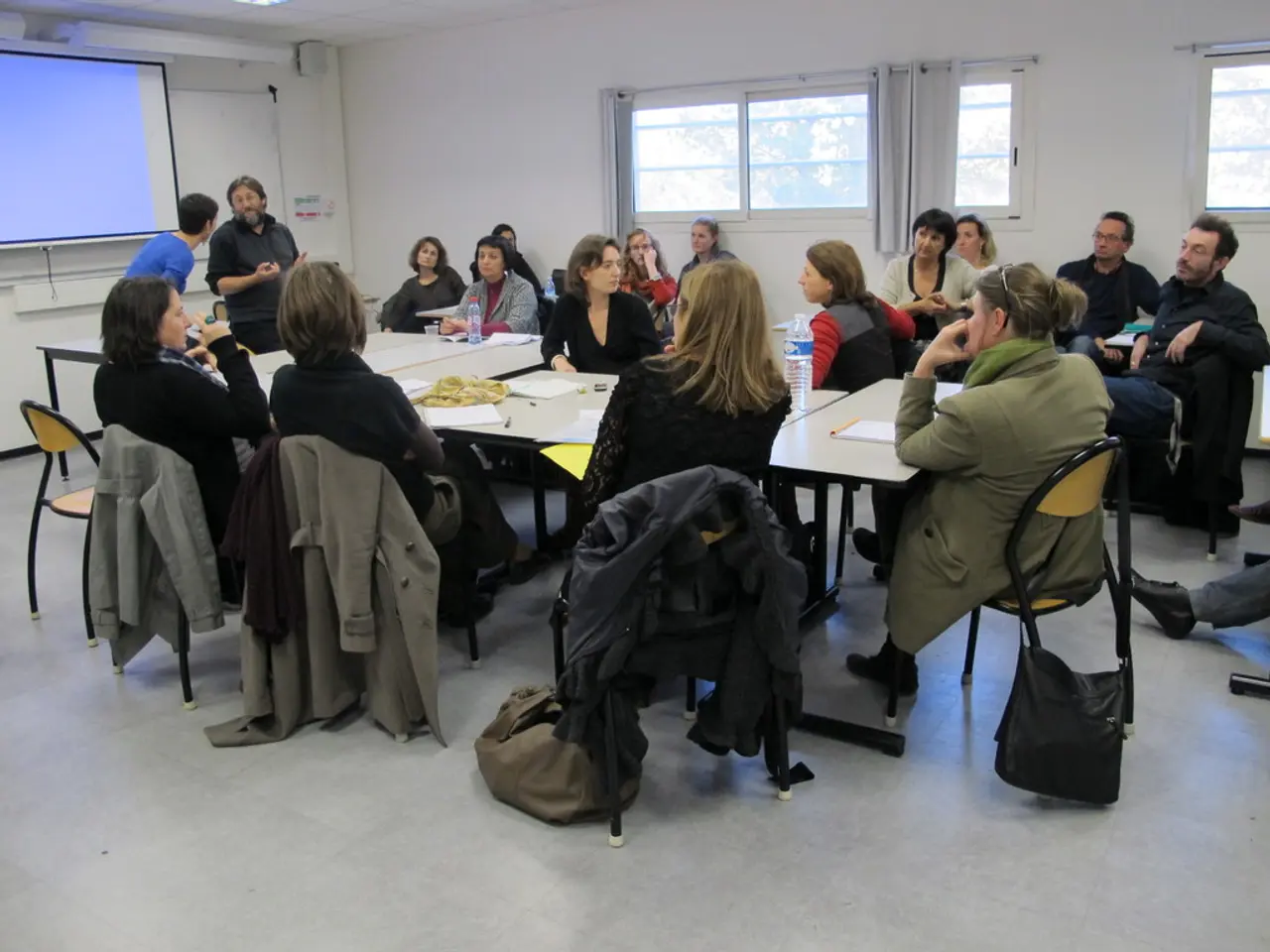Instructions on Interview Analyzing Techniques
Focus group interviews are an essential tool for businesses, organisations, and researchers seeking to gain a deeper understanding of their respective topics. By bringing together a group of individuals and facilitating a discussion, these interviews offer several advantages that set them apart from other qualitative research methods.
Advantages of Focus Group Interviews
One of the key benefits of focus group interviews is the rich, in-depth data they provide. The interactive nature of these sessions allows participants to build on each other's responses, resulting in nuanced insights that might not be possible through surveys or questionnaires.
Another advantage is the exploration of group dynamics. The interaction among participants can reveal shared experiences, diverse perspectives, and social dynamics that might not emerge in one-on-one interviews.
The interactive and sometimes informal setting can also encourage participants to express themselves more freely and creatively, particularly with skilled facilitation. This sense of comfort can lead to unique and valuable insights.
Moreover, focus group interviews offer flexibility. Researchers can adapt topics during discussion to explore unanticipated themes or insights. Additionally, interviewing multiple participants simultaneously saves time compared to conducting individual interviews.
Lastly, focus group interviews provide a venue for gathering varied opinions within a particular demographic group in a single session.
Disadvantages of Focus Group Interviews
Despite their advantages, focus group interviews also present several challenges. Strong personalities can dominate the discussion, potentially skewing the data or silencing quieter members. The small group size means not all perspectives within a community or population can be captured or generalized.
Skilled facilitation is crucial to manage group dynamics and handle sensitive topics appropriately. Focus group interviews can be resource-intensive, requiring more time, personnel, and suitable physical or technical setups.
Online focus groups, while more cost-effective and convenient, may lose nuanced body language or face technical disruptions, complicating data interpretation. Participants may also conform to what they perceive as socially acceptable views or pressures within the group, reducing authenticity.
Comparison with Other Qualitative Methods
| Aspect | Focus Groups | Individual Interviews | Surveys | |---------------------------|------------------------------------|-----------------------------------|----------------------------------| | Depth of Insight | High due to group interaction | High, very detailed individual views | Usually low, especially in structured surveys | | Group Dynamics | Explored through interaction | Absent | Absent | | Representativeness | Limited due to small group size | Limited but more private | Larger samples possible | | Flexibility | Moderate to high in discussion flow| High in probing individuals | Low in structured formats | | Resource Intensity | Moderate to high | High (time consuming) | Low to moderate | | Risk of Dominance Bias | High | Low | N/A | | Suitability for Sensitive Topics | More challenging; needs skilled moderation | Better for privacy and depth | May suffer from non-response or dishonesty |
In summary, focus groups are particularly valuable when insights into social interaction and collective viewpoints are important. However, they require skilled moderation and careful consideration of group dynamics and participant selection. They complement rather than replace individual interviews or surveys in qualitative research.
Typically, the moderator starts with simple, non-threatening questions to help participants feel at ease. Data collected in focus group interviews is typically qualitative in nature, consisting of words, ideas, and opinions rather than numbers. In a focus group interview, data is collected in a social context as participants' responses are influenced by group dynamics. Focus group research is a qualitative research method that provides rich, detailed insights into participants' perceptions, attitudes, and behaviors.
Read also:
- Overcoming Yielding Regulations Hurdles in Indian Export Sector for EU Markets
- Shaping production and consumption tendencies via cosmetic certification
- Center Stack Display Market Forecast to Reach USD 7.2 Million by 2034
- Health care professionals targeted in a shooting incidents, a pattern of hostile actions against health workers continues to unfold, with many observing this trend as unremarkable.




